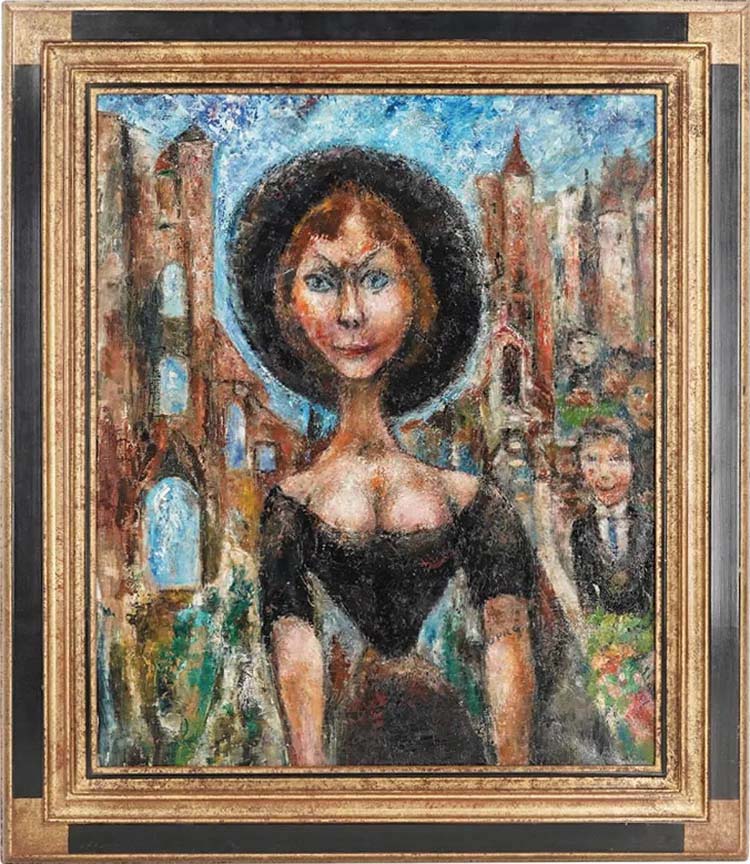

EDOUARD GOERG
"LA PARISIENNE EN VACANCE"
OIL ON CANVAS, SIGNED, TITLED
FRANCE, C.1960
25.75 X 21.75 INCHES
FRAMED 31.75 X 27.5 INCHES
Édouard Goerg 1893-1969 Édouard Goerg was born in Sydney, Australia in 1893, his parents were French. After spending several years in England, his family settled in Paris in 1900. Between 1910 and 1914 Goerg traveled to France, Italy, and India. Goerg studied at l’Acédmie Ranson in 1913-1914 with Maurice Denis and Paul Sérusier. Goerg was mobilized for World War One and was in the military until 1919. During his time in the military he traveled to Greece, Turkey, and Serbia. After being refused several times he was accepted a the Salon des Indépendants in 1922, he exhibited at the Salon d’Automne, Salon des Tuileries, and Salon des Pientres Témoins de Leur Temps, as well as Salon d ‘Art Français Indédendant. Goerg exhibited at Galerie Berthe Weill in 1922 and 1924, included were his friends and contemporaries Marcel Gromaire, Jules Pascin and Per Krogh. His first one-man exhibition was in Paris in 1925. He showed in Brussels at Galerie du Centaure in 1926, Nouvel Essor, in 1927 and 1929 at Galerie Georges Bernheim. Goerg continued to exhibit for the following four decades. He had exhibition at museums in San Paulo, Rio de Janeiro, and Athens. Goerg also exhibited in New York, Findley Gallery in Chicago, Boston, and Philadelphia. Goerg illustrated more than dozen books. Early in Goerg’s career he was compared to James Ensor, the Belgian who was part English, and whose work was a forerunner of Expressionsim. Goerg’s paintings are surely rooted in Expressionism, the mood is somber, the colors deep, and his figures are haunting. His early works have elements of Cubism, but he abandoned that discipline. His paintings contain social commentary, strange and unusual composition, and the dark eyes of his subjects suggest hidden secrets. There are strong parallels between Éduard Goerg and Marcel Gromaire, they exhibited together and their artistic documentation of Paris over a period of several decades gives the observer a deep insight of Les Année Folles.
|